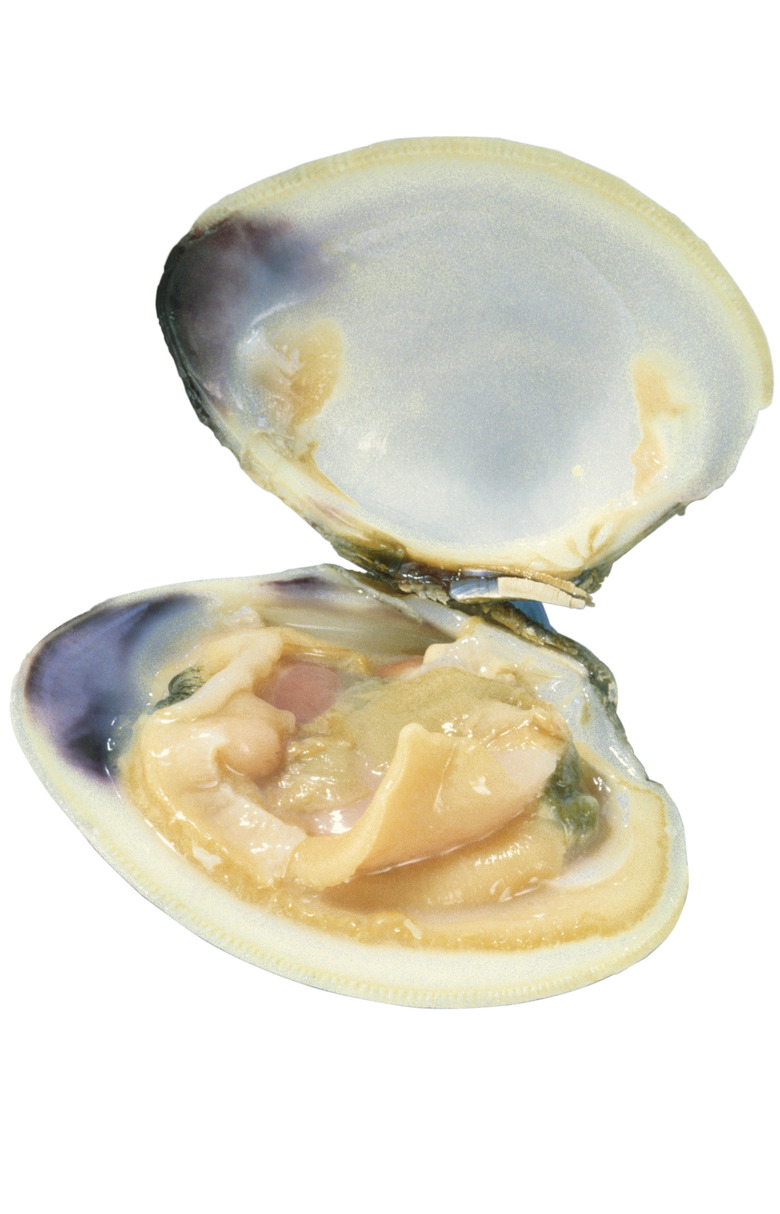Fun Clam Facts
Clams are a type of invertebrate, or an animal without a backbone. Clams are also part of the Mollusca phylum, the second largest group of animals in the world. In this phylum, clams are classified as bivalve shellfish, meaning their body is enclosed in two hard outer shells that hinge at the base.
Different Types of Clams
Different Types of Clams
There are more than 15,000 clam species worldwide. Clams in the ocean are saltwater clams. Clams that live in ponds and lakes are freshwater clams. Most clams spend their adult lives burrowed safely into sand or mud. However, some clam species bore through wood and rock.
What Do Clams Eat?
What Do Clams Eat?
Clams are filter feeders. They have fine hair-like structures across their gills called cilia. These cilia move to suck in water through a long tubular structure called a siphon that reaches the surface of the mud. Their gills trap suspended particles in the water then move them to the mouth. These suspended particles include tiny organisms which the clams eat. The clean water is then ejected through an outgoing siphon.
Because of clams' natural filter-feeding abilities, they are excellent natural water purifiers. They create clearer water, which in turn helps increase light exposure for photosynthetic organisms like seagrasses. Plus, they remove toxic algae after natural bloom events. A small clam measuring between one and two inches can filter up to 4.5 gallons of water a day.
Clam Life Cycle
Clam Life Cycle
Clams are broadcast spawners, meaning they release their sperm and eggs into the water en masse for fertilization. Clams then undergo a series of free-swimming larval stages. As they grow, their shells become heavier until, eventually, young clams settle onto the muddy or rocky bottom. The juvenile clam then uses its muscular foot to move around and find a suitable place to settle. Adult clams use a sticky hair-like structure called a byssus to stick to the bottom of a water body; then, they burrow into the mud or sand with their foot.
The Geoduck
The Geoduck
The geoduck, or deepwater king clam (Panopea zelandica), is the world's largest burrowing clam. Geoducks have a very long siphon which allows them to bury themselves up to a meter deep in the sand along the coasts of New Zealand. Adult geoduck shells only measure around eight inches, but their siphon and body can be over 3.3 feet long. Geoducks are known to live to be over 165 years old. Geoducks are considered a delicacy, and a meal of New Zealand geoduck can cost around $400 in China and Hong Kong.
The Giant Clam
The Giant Clam
The biggest clam in the world is appropriately named the giant clam (Tridacna gigas). It is found among coral reefs in the tropical Indian and Pacific oceans. The largest giant clam ever found measured over four and a half feet long and weighed around 550 pounds. Ninety percent of this giant's clam's weight was its shell.
Giant clams also have symbiotic algae living within their cells. The algae photosynthesize, providing the giant clam with any excess energy they produce. In exchange, the algae receive a safe place to live and the nutrients they need to survive. The photosynthetic algae are actually what produce giant clams' bright colors.
Shipworms
Shipworms
Boring clams from the families Teredinidae and Pholadidae get the name "shipworms" from the damage they cause to ship hulls and pilings. Wood-boring clams use their razor-sharp sides to twist through the wood, cutting chunks away as they move. These clams eat the wood as they burrow with symbiotic bacteria, helping them digest it.
Rock-boring clams begin burrowing when they are young, but they don't eat the rock – they use it to hide. As they grow, they become wedged inside the rock and cannot leave, which offers them protection from predators. Like most clam species, these clams filter feed using siphons.
Cite This Article
MLA
Jerrett, Adrianne. "Fun Clam Facts" sciencing.com, https://www.sciencing.com/fun-clam-10048870/. 30 September 2021.
APA
Jerrett, Adrianne. (2021, September 30). Fun Clam Facts. sciencing.com. Retrieved from https://www.sciencing.com/fun-clam-10048870/
Chicago
Jerrett, Adrianne. Fun Clam Facts last modified March 24, 2022. https://www.sciencing.com/fun-clam-10048870/
